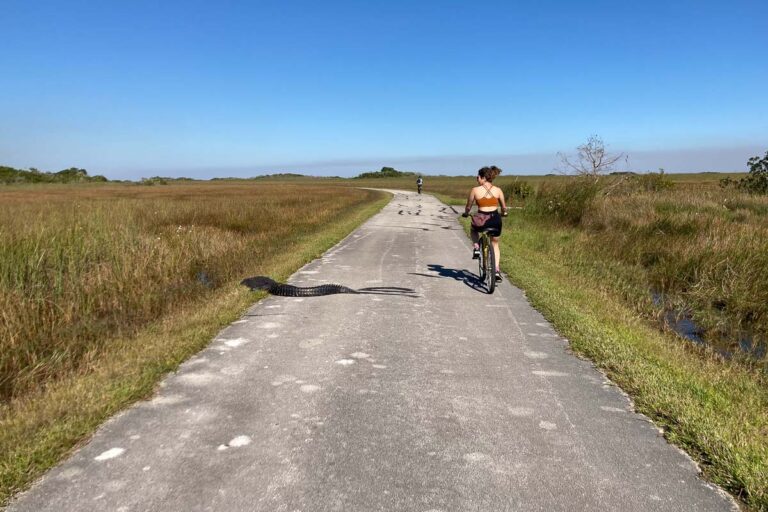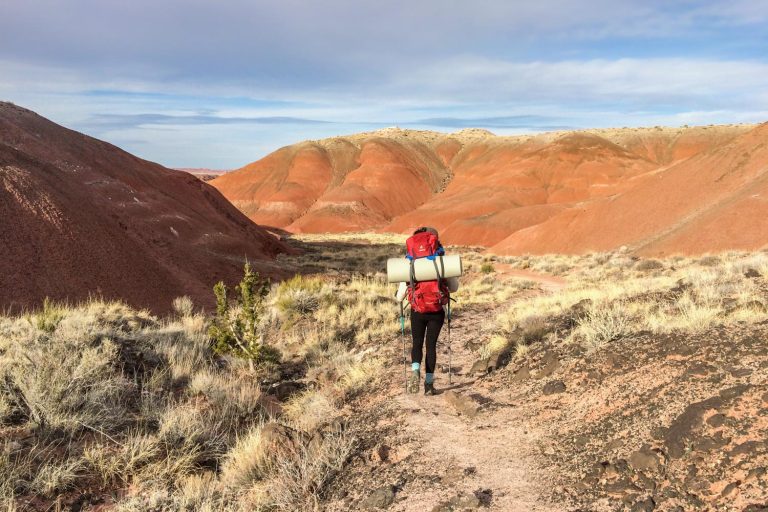How Do People Die in National Parks? 20 Leading Causes of Death
National parks and other sites managed by the National Park Service are among the most popular holiday destinations in the United States, both among Americans and foreign visitors alike. In fact, America’s National Park System, which consists of 433 different units, receives well over 300 million visitors every year.
The reasons why so many people visit the national parks are wide-ranging and diverse, from seeing wildlife and photographing iconic landscapes to hiking famous trails, climbing rugged mountains, and rafting wild rivers.
For the vast majority of visitors, a national park trip is filled with fond memories and unforgettable activities—perhaps even once-in-a-lifetime experiences. However, for a number of unfortunate people, a visit to a national park is the last thing they’ll ever do, for each year, hundreds of visitors die in the national parks.
Below, I’ve summarized a bunch of statistics on deaths in the national parks. You’ll find the known leading causes of death in national parks, as well as infographics that interpret the wealth of mortality data provided by the National Park Service.
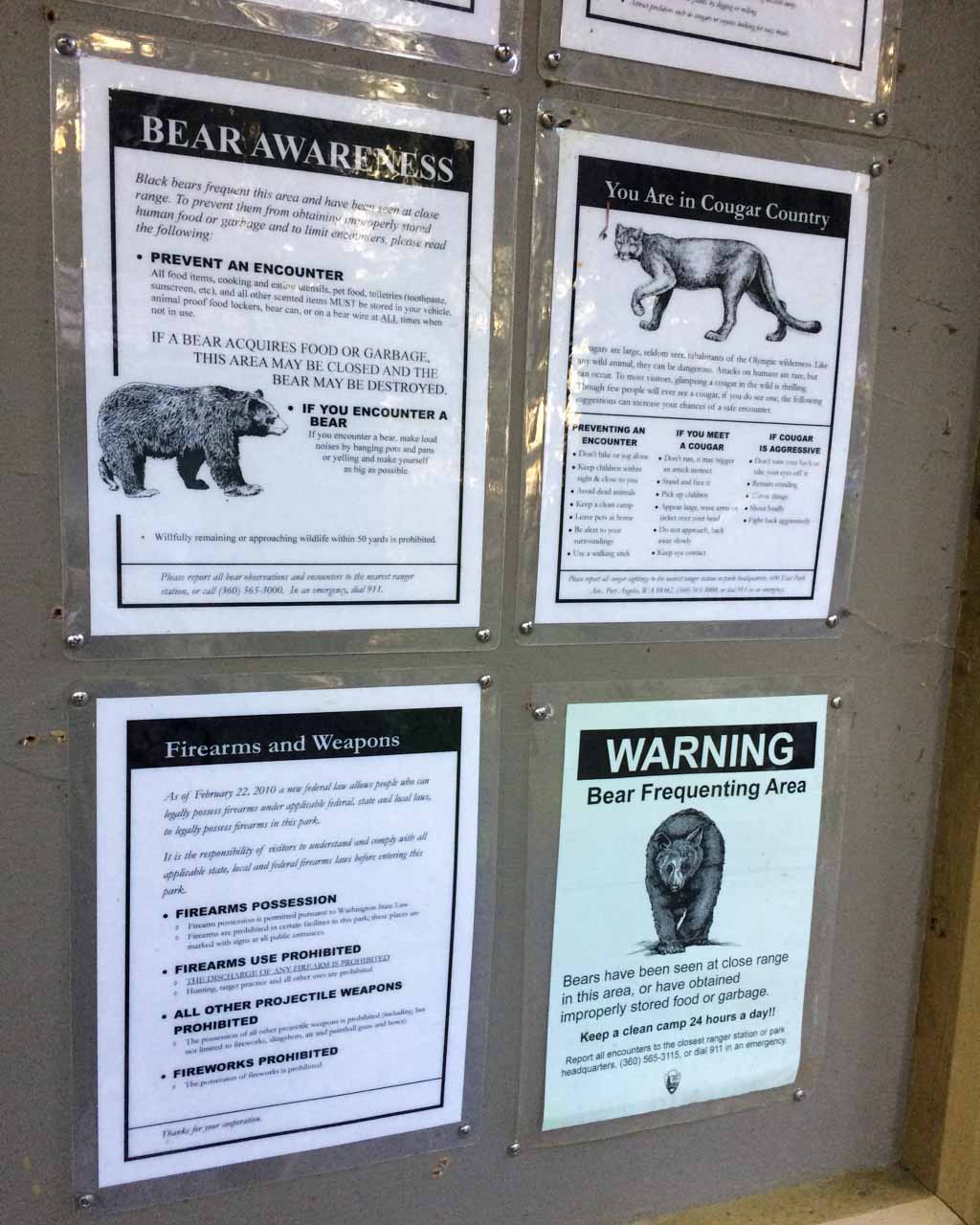
How Do People Die in National Parks?
The National Park Service keeps a detailed record of the deaths that occur throughout the National Park System each year.
This truly is a treasure trove of information. It includes data on the leading causes of death in the national parks; the park activities that resulted in death; factors that contribute to deaths, such as environmental, behavioral, and mechanical; and demographics that are at greater risk of dying in the national parks.
You can find all this information on the “mortality data” page on the National Park Service website, which is what I used to write this article about the known leading causes of death in the national parks.
Fatalities in national parks have many different causes, from intentional (homicide, suicide, legal intervention) to unintentional (falls, drowning, car accidents, plane crashes, hyperthermia, lightning strikes,…). You can see the twenty most common causes of death in national parks below.
How Many People Die in National Parks Each Year?
In the period from 2014 through 2023, a total of 3,081 people lost their lives while visiting a National Park Service site. On average, this is just over 308 people per year, or almost 6 people each week.
It is important to put this into perspective, though. Considering that well over 300 million people visit the parks each year, this is a vanishingly small number of deaths. For the average visitor who just hikes a couple of moderate trails, enjoys some views, and stays in lodges, the risk of dying in a national park is extremely low.
That’s not to say, however, that one’s risk is absolute zero. Accidents and unfortunate events, whether caused by Mother Nature or (other) humans, do happen on a regular basis. Below, we’ll explore the twenty known leading causes of death in national parks.
Most of them are very uncommon, as you can see in the percentages shown next to each cause. However, there are five main causes of death in national parks—see the top five below—that take up the vast majority of fatalities. Just those five leading causes are responsibly for no less than 75% of all deaths that occur in national parks!
Top 20 Leading Causes of Death in National Parks
20. Electrocution (0.10%)
Between 2014 and 2023, three people lost their lives at a National Park Service site due to electrocution.
One person got electrocuted on a boat in Glen Canyon National Recreation Area; another while walking at the Home Of Franklin D Roosevelt National Historic Site; and the third while participating in illegal activity at Valley Forge National Historical Park. All were males.
19. Wildlife Incident (0.16%)
Despite many visitors being afraid of wild animals, actually getting killed by wildlife in a national park is extremely rare. In fact, this category of deaths in national parks barely made it into the top 20!
There were merely five fatal incidents with wildlife in all 431 National Park Service units from 2014 through 2023. That’s only five fatalities in more than three billion (!) combined recreational visits between 2014-2023.
- Grizzly bear incident in Yellowstone National Park in 2015
- Grizzly bear incident in Grand Teton National Park in 2018
- Great white shark incident at Cape Code National Seashore in 2018
- Black bear incident in Great Smoky Mountains National Park in 2020
- Grizzly bear incident in Wrangell-St. Elias National Park in 2020
Wildlife Safety
Whenever you’re recreating in a park that’s home to potentially dangerous wildlife, it’s crucial to know what to do when you encounter an animal. I strongly recommend reading the following wildlife safety articles:
- Bison safety
- Black bear safety
- Grizzly bear safety
- Elk safety
- Moose safety
- Rattlesnake safety
- Shark safety
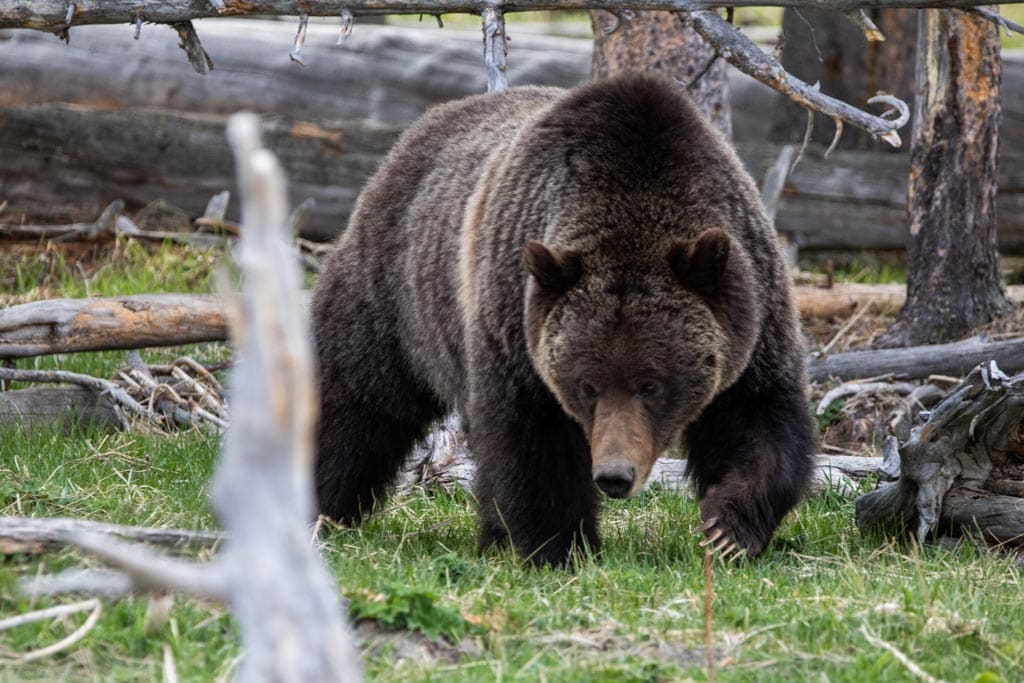
18. Other Transportation (0.16%)
This category includes a number of means of individual transportation other than driving or bicycling. Specifically, it combines some of the more adventurous outdoor sports, such as skateboarding, skiing, snowboarding, and snowmobiling.
In the decade covered by this national park deaths analysis, two people died while skateboarding, one while skiing, one while snowboarding, and one while snowmobiling.
17. Lightning Strike (0.23%)
Statistically speaking, you’re more likely to get killed by a lightning strike than by a wild animal when visiting national parks.
Between 2014 and 2023, seven people lost their lives after being struck by lightning at a National Park Service site. There were two fatal lightning strikes in two consecutive days in Rocky Mountain National Park in 2014, one at the Grand Canyon in 2015, and another on the Blue Ridge Parkway in 2016.
On a fateful day in August 2020, lightning struck visitors at the National Mall & Memorial Parks, killing three of them.
16. Avalanche (0.26%)
Avalanches pose a serious risk in many mountain parks. This is a main reason why certain roads and trails don’t open until later in the season in some specific parks.
A total of eight people perished in an avalanche while exploring a national park from 2014 through 2023. North Cascades, Glacier, Yosemite, and Denali all had one fatality due to an avalanche in that period.
Grand Teton National Park had the highest number of avalanche-caused deaths, with four people unable to escape the raging snow and ice—two on the same day in 2015 and two on the same day in 2021.
15. Flash Flood (0.36%)
Flash flood warnings are quite common in certain parks, particularly on the Colorado Plateau, which is dotted with steep canyons, ravines, gullies, and washes.
Between 2021 and 2023, the Grand Canyon, Glen Canyon, Zion, and Bryce Canyon each had one fatality due to a flash flood. A particularly deadly incident occurred in Zion National Park in September 2015, when seven members of a canyoneering party were killed by a flash flood.
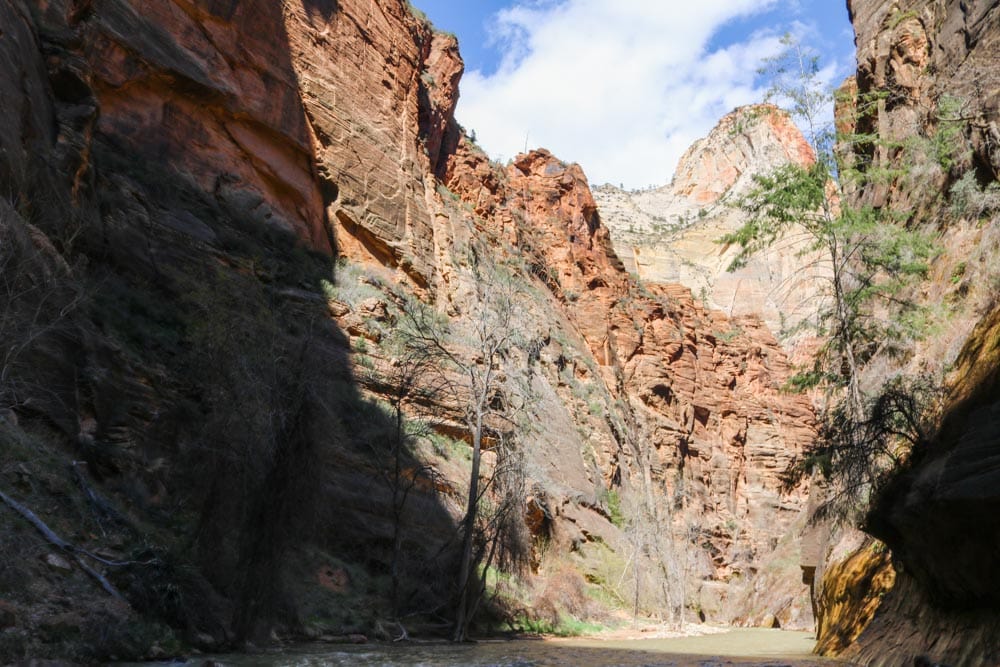
14. Rockfall (0.49%)
There are many ways you can die in a national park, but getting hit by a falling rock isn’t typically at the top of anyone’s mind when exploring parks. Yet, no fewer than fifteen people have lost their lives in this very manner.
Deadly rockfalls have occurred in a variety of parks, from North Cascades, Mount Rainier, Glacier, Yosemite, and Joshua Tree to Point Reyes, Lake Mead, Curecanti, and the Presidio of San Francisco.
13. Bicycle Only Crash (0.49%)
While biking is one of my personal favorite ways to explore national parks, I’m acutely aware of the inherent dangers of this activity. You are, after all, sharing the road with cars and much larger vehicles like RVs, buses, and trucks.
Fifteen people died in a bicycle only crash at a National Park Service site between 2014 and 2023. These tragedies occurred in parks like the Blue Ridge Parkway (3), Colorado National Monument (2), Chesapeake & Ohio National Historical Park (2), Golden Gate National Recreation Area (2), Great Smoky Mountains National Park (2), and a few others.
12. Falling Tree/Branch (0.52%)
Similar to rockfalls, few people expect to witness, let alone experience, an injury or death due to a falling tree or branch. But these freaky accidents do, unfortunately, occasionally happen in the National Park System.
From 2014 through 2023, sixteen people got killed by a falling tree or branch while they were visiting a park. These accidents can happen in any park that has trees (which is almost all of them). Some parks where a falling tree or branch has killed a visitor include Yosemite, Yellowstone, Olympic, Mount Rainier, Great Smoky Mountains, Muir Woods, Harpers Ferry, and the Appalachian Trail.
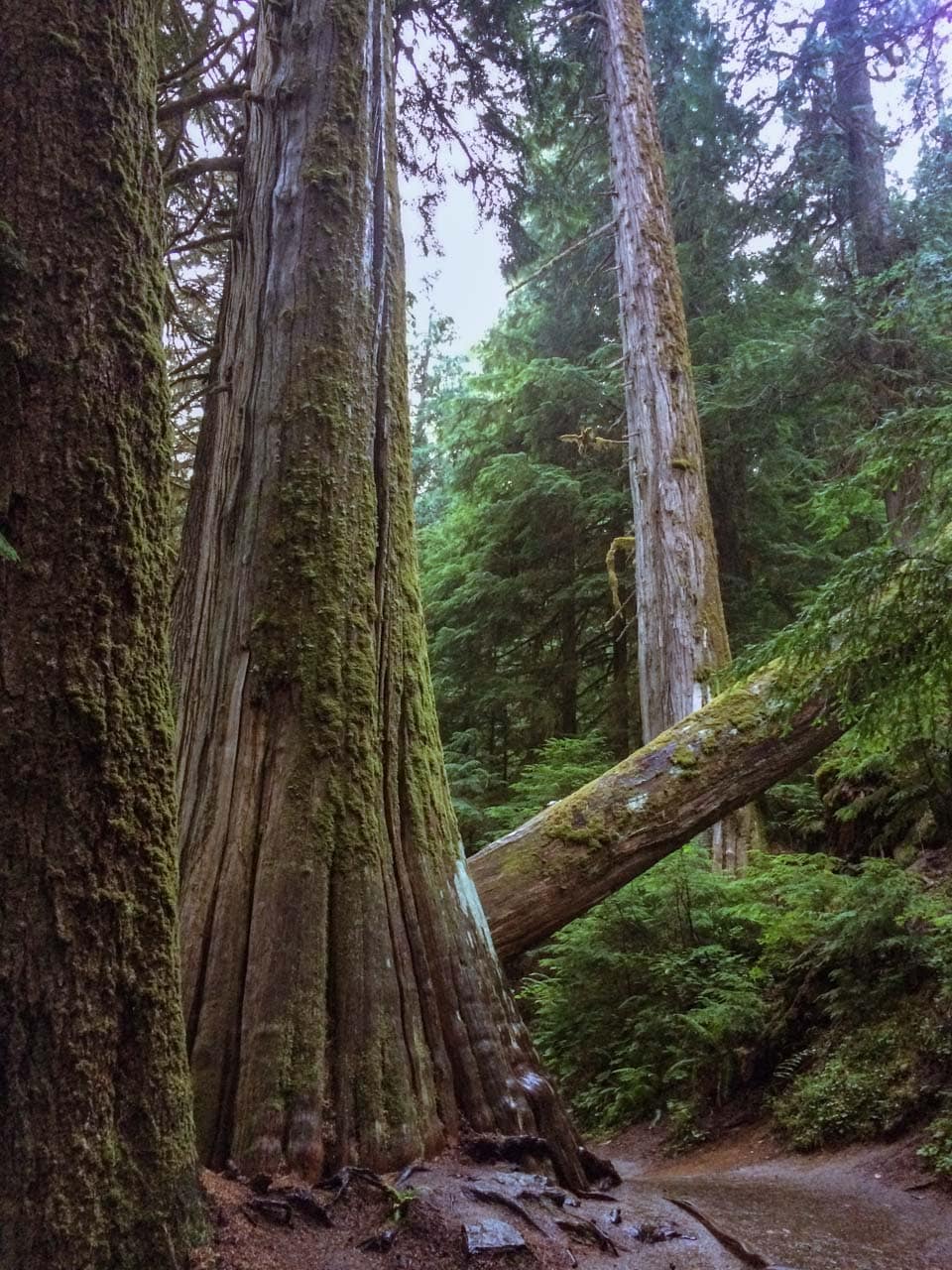
11. Hypothermia (0.75%)
Hypothermia is one of the potentially dangerous conditions many visitors, especially hikers and other backcountry adventurers, are warned about. And while it can turn deadly pretty quickly when not treated, it’s actually not that common for visitors to die from hypothermia in national parks.
“Only” 23 visitors lost their lives due to hypothermia at a National Park Service site between 2014 and 2023. Most of them suffered hypothermia in the backcountry in rugged parks like Rocky Mountain, Mount Rainier, Death Valley, Olympic, Zion, and Yosemite.
However, some hypothermia-caused deaths also occurred in urban parks, such as Golden Gate National Recreation Area, the George Washington Memorial Parkway, and the National Mall & Memorial Parks.
Top 10 Leading Causes of Death in National Parks
10. Vessel Incident (0.88%)
Although we’ve now entered the top ten of causes of death in national parks, that doesn’t mean that all these causes are exceptionally common. In fact, in the case of deaths due to vessel incidents, this is actually quite rare.
In the period from 2014 through 2023, there were 27 fatal vessel incidents across the entire National Park System, which is merely 0.88% of all deaths. For obvious reasons, all these deaths occurred in parks that have large bodies of water—and, therefore, lots of water-based activities.
The deadliest parks in terms of vessel incidents were Point Reyes National Seashore (4), Bighorn Canyon National Recreation Area (4), Lake Mead National Recreation Area (5), and Glen Canyon National Recreation Area (5).
Other parks where fatal vessel incidents have occurred include Virgin Islands, Grand Teton, Indiana Dunes, Grand Canyon, Everglades, and Biscayne.
9. Poisoning (1.27%)
The fact that 39 people died from poisoning at a National Park Service site may be surprising at first. But when you take a look at what “poisoning” actually means in this context, it makes a bit more sense.
This category of national park deaths includes carbon monoxide poisoning (only 2 deaths), but also alcohol poisoning (4 deaths) and, especially, drug poisoning (33 deaths). The latter includes drug overdoses.
It’s worth pointing out that exactly zero people died from ingesting poisonous plants or other things that naturally occur in national parks.
8. Aircraft Incident (1.30%)
The reason why deaths because of aircraft incidents are relatively high on this list is not necessarily because they happen very often. It’s just that when they happen, there’s usually more than one fatality. This can add up quickly over a decade-long period.
Between 2014 and 2023, along with numerous single-fatality accidents, there were several aircraft incidents with two or more fatalities:
- Three people died in an aircraft incident in Great Smoky Mountains National Park in 2016
- Two people died in an aircraft incident in Grand Teton National Park in 2018
- Four people died in an aircraft incident in Everglades National Park in 2018
- Five people died in an aircraft incident in Denali National Park in 2018
- Three people died in an aircraft incident in Glacier Bay National Park in 2018
- Two people died in an aircraft incident in Sequoia & Kings Canyon National Park in 2020
- Two people died in an aircraft incident in Wrangell-St. Elias National Park in 2021
- Two people died in an aircraft incident in Golden Gate National Recreation Area in 2022
- Two people died in an aircraft incident in Glen Canyon National Recreation Area in 2022
In total, there were 24 fatal aircraft incidents from 2014 through 2023, which were responsible for 40 deaths.
7. Homicide (1.40%)
Homicides make up 1.4% of all-cause deaths in national parks. This is the seventh leading cause of death in the parks, which may come as a surprise to some.
Forty-three people got killed by another human being in the national parks between 2014 and 2023. There’s at least one homicide at a National Park Service site each year—with most years having five or more homicides.
The parks with the highest homicide rate during that decade-long period are Lake Mead National Recreation Area (3), Suitland (3), Anacostia Park (3), and the Blue Ridge Parkway (5).
6. Hyperthermia (1.66%)
Also known as overheating, hyperthermia is the sixth leading cause of death in national parks. From 2014 through 2023, it was responsible for 51 deaths—or just over five per year—in the entire National Park System.
The vast majority of hyperthermia-related fatalities occurred in the desert parks of the Southwest:
- Arches National Park: 2
- Canyonlands National Park: 2
- Carlsbad Caverns National Park: 2
- White Sands National Park: 2
- Joshua Tree National Park: 3
- Saguaro National Park: 2
- Big Bend National Park: 4
- Lake Mead National Recreation Area: 4
- Death Valley National Park: 5
- Organ Pipe Cactus National Monument : 7
- Grand Canyon National Park: 8
Other parks that each had one fatality due to overheating during those ten years include Badlands National Park, Big Thicket National Preserve, Black Canyon of the Gunnison National Park, Zion National Park, and perhaps surprisingly, Alaska’s Glacier Bay National Park.
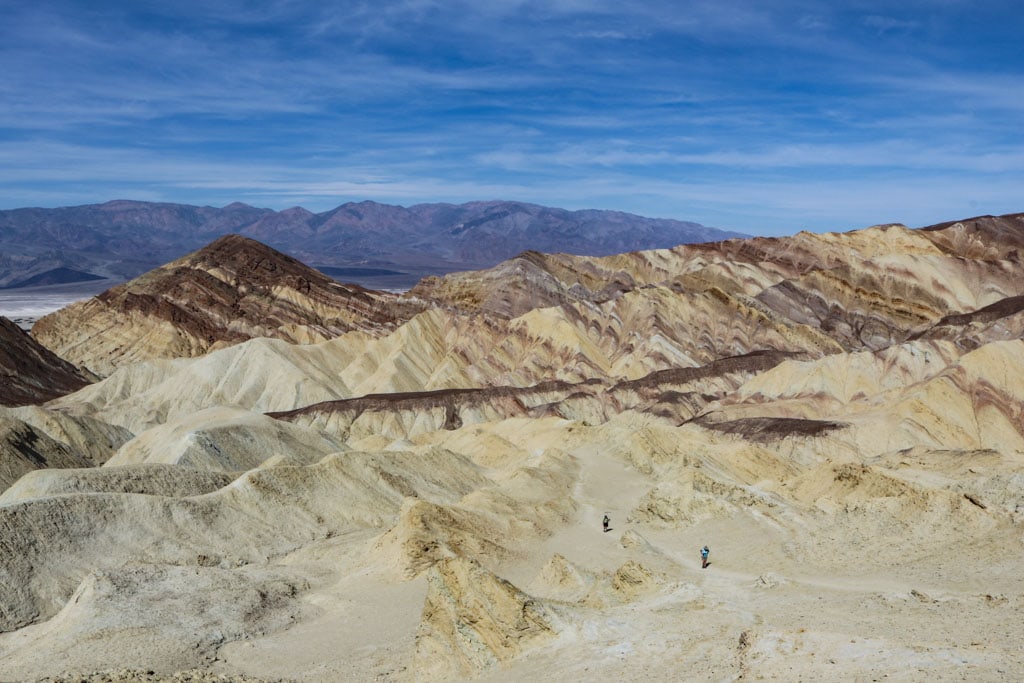
Top 5 Leading Causes of Death in National Parks
5. Fall (9.32%)
Note the huge jump in percentage from number six to number five here. Fatal falls are responsible for 9.32% of all deaths in national parks.
No fewer than 287 people didn’t survive a fall in a national park. This means that, on average, almost 30 people die from falling in the National Park System each year.
Although some falls are unfortunate accidents, many are caused by visitors not adhering to guidelines and safety regulations. Most deadly falls occur in mountainous parks or parks with cliffs and canyons.
This was the top ten of National Park Service sites with the highest number of fatal falls:
10. Canyonlands National Park (7)
9. Glacier National Park (8)
8. Glen Canyon National Recreation Area (10)
6. Grand Teton National Park (13)
6. Rocky Mountain National Park (13)
5. Zion National Park (14)
4. Mount Rainier National Park (16)
3. Grand Canyon National Park (22)
2. Sequoia & Kings Canyon National Parks (27)
1. Yosemite National Park (37)
4. Drowning (13.79%)
With a grand total of 425 fatalities in a ten-year period, drowning is one of the most common causes of death in national parks. The risk of drowning exists wherever there are any water-based activities, whether it’s in oceans, rivers, lakes, or ponds.
People drown when their kayak topples in strong winds, when they get swept away by wild rivers, when slipping near a waterfall, when not wearing life vests,… there are many reasons why visitors die in park waters.
The park with the most drownings was Lake Mead National Recreation Area (56), followed at a significant distance by Cape Hatteras National Seashore (26), Chattahoochee River National Recreation Area (22), Glen Canyon National Recreation Area (19), and Gulf Islands National Seashore (17).
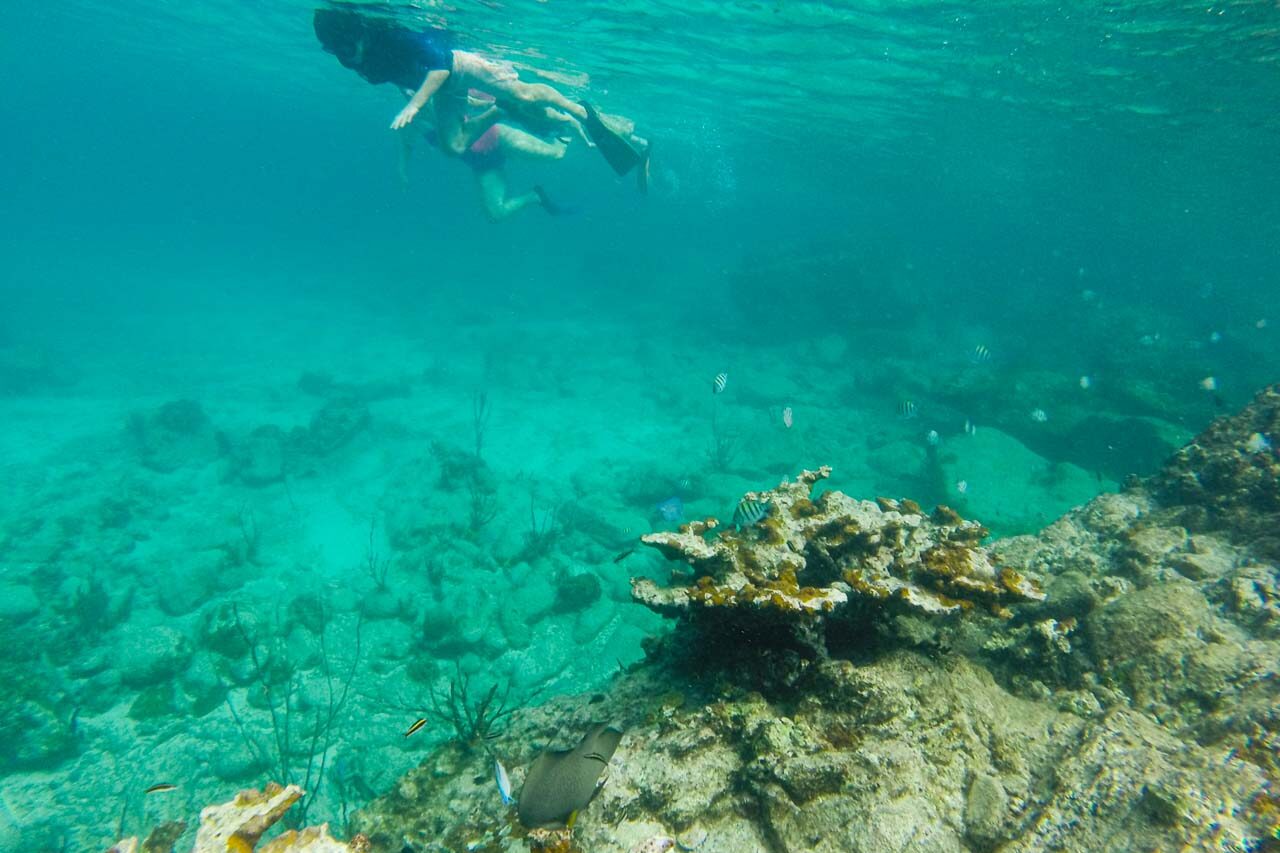
3. Motor Vehicle Crash (16.26%)
Of the numerous unintentional causes of death in national parks (which do not include deaths due to natural causes), motor vehicle crashes are by far the most common. As is the case in society in general, driving is one of the most dangerous activities you can do.
From 2014 through 2023, a total of 501 visitors got killed in a motor vehicle crash in the National Park System—just over 50 people every year. While fatal vehicle crashes have happened in numerous different parks, it’s the parks with scenic roads or parkways that recorded the lion’s share of deaths.
The National Park Service site with the most fatal motor vehicle crashes was the Natchez Trace Parkway (68). Other sites that had a high number of deadly crashes were the Blue Ridge Parkway (56), the Baltimore-Washington Parkway (41), Lake Mead National Recreation Area (40), and Great Smoky Mountains National Park (37).
2. Medical (18.11%)
Medical deaths were responsible for 18.11% of all deaths in the National Park System. This includes all deaths from natural causes, such as heart attacks, seizures, and strokes, whether they happened during physical activity or not.
A total of 558 visitors died of natural causes when visiting a park, 285 of whom died during physical activity, which includes, but isn’t limited to, walking, hiking, fishing, snorkeling, swimming, and bicycling.
Just over 200 people died from medical causes while not participating in physical activity. This includes sitting, eating, sleeping, camping, and driving. The rest of medical deaths occurred during unknown activity.
1. Suicide (18.21%)
According to National Park Service data, 561 people took their own life at a National Park Service site from 2014 through 2023. This makes suicide the single most common cause of death in national parks. Suicide was responsible to 92.5% of all intentional causes of death (legal intervention, homicide, and suicide).
Parks that are easily accessible, free, near urban areas, and/or particularly scenic saw the most suicides.
Examples of parks that recorded the most suicides are the Blue Ridge Parkway, Natchez Trace Parkway, Golden Gate National Recreation Area, Lake Mead National Recreation Area, New River Gorge National Park, and Grand Canyon National Park.
Suicides are a national public health concern. The objective of collecting and analyzing suicide data is to support an informed discussion about suicides in national parks.
If you are in crisis or are thinking about suicide, please know that help is always available. Call or text the National Suicide Prevention Lifeline at 988, which can be reached 24 hours a day, 7 days a week. The service is available to anyone. All calls are confidential. http://www.988lifeline.org.
Death in National Parks Infographics
SOURCES
NOTES
NOTE 1: The information, numbers, and stats above are based on mortality data provided by the National Park Service at the time of writing. More specifically, they are derived from this Excel spreadsheet, which covers the entire National Park System. I should note that I’ve used the data from the period 2014-2023 to write the rest of this article. I decided to not include the data from before 2014 because prior to 2014, the National Park Service’s Public Risk Management Program collected data only on unintentional deaths (drownings, falls, car crashes,…), which left out hundreds of annual deaths due to homicide, suicide, and legal intervention. From 2014 onward, the data includes all deaths (both unintentional and intentional, medical, and undetermined deaths) and is, therefore, much more precise and provides a better insight into how people actually die in the national parks—it shows all known causes of death in the national parks.
NOTE 2: In this article, I use the words “national parks,” “parks,” and “National Park Service sites” interchangeably. The National Park Service itself refers to its sites, with all their varied designations, as “parks.” For the sake of clarity, the statistics used in this article cover the entire U.S. National Park System (a total of 429 different sites) and not just the 63 officially designated National Parks.
NOTE 3: The statistics and numbers shared in this article are absolute numbers. They do not show insights into the relative numbers of deaths in parks—for example, they do not indicate how “dangerous” a particular park may be based on its death/visitation ratio. They merely showcase the total number of deaths per cause and/or park in the period 2014-2023. This is not an article about the “most dangerous national parks,” which is something that’s nearly impossible to calculate correctly, for the simple reason that death data does not account for near misses, unreported incidents, non-fatal injuries, and illnesses, which should all be taken into account when determining how dangerous a park actually is.




